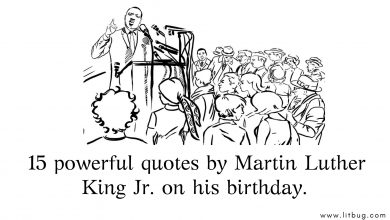The Singing Lesson | Summary and Analysis
The Singing Lesson by Katherine Mansfield

The Singing Lesson is a short story by Katherine Mansfield which depicts a situation in the personal life of its protagonist Miss Meadows and explores the nuances of her emotional response to the same. Like most of Mansfield’s stories, The Singing Lesson thoroughly explores the multiplicity of emotions of its character and the complex interiority of an individual’s life. Devoid of a prominent plot or a definite ending, this story is a fine example of what Mansfield is famous for : of shedding a light on the complexity of everyday events in the lives of ordinary individuals. Her stories attempt to explore the lives of ‘ordinary’ characters, and in doing so lends them a sense of dignity by saying that every ordinary individual has an extraordinarily complex story to tell and that this complexity is worth full exploration – to the extent of making it the primary subject of her stories . Such a treatment to the characters in her story becomes a powerful statement in a form where elements of plot and setting have traditionally been the dominant features. Most of her stories are devoid of a clear beginning and a neat end. This is precisely what she does with the characters : she makes it clear that the individuals inhabiting her stories cannot be identified with certain set of markers or be plotted in definite terms and that there are layers and layers of complexity that influence the actions and go into the making of their identities. It is this complexity which Mansfield suggests, deserve a sound exploration.
The Singing Lesson | Summary
The Singing Lesson begins with Miss Meadows having a hard time dealing with her emotions, the people around her and life in general. Miss Meadows is a music teacher in an all-girls school and isn’t particularly at ease in the noisy , cold setting.
She is greeted by the Science Mistress in what she feels is hypocritical act. Neither does she like the Science Mistress nor her greeting. Miss Meadows then proceeds to the music hall where she has to deal with a group of girls waiting for the singing lesson. She clearly isn’t in a good mood today and she knows that the girls know it as well. public opinion, she begins her work in a no-nonsense manner, rudely ignoring the customary bunch of yellow Chrysanthemum handed out to her by her favorite, Mary Beasley. She chooses a lament:
Fast! Ah, too Fast Fade the Ro-o-ses of Pleasure ;
Soon Autumn yields to Wi-inter Drear.
Fleety! Ah, Fleety Mu-u-sic’s Gay Measure
Passes away from the Listening Ear”
The tragic note of the lament perfectly complements her mood and Miss Meadows’ thoughts fleet towards the cause of her distress: a not-so polite letter by her fiancé which threatened to call off their engagement:
“…I feel more and more strongly that our marriage would be a mistake…I am not a marrying man…and the idea of settling down fills me with nothing but disgust-“
She thinks of her fiancé Basil, of how they first met, of how handsome he looked, of how he had expressed his fondness for her, of what the Science Mistress would think of her, of how the 25 year old Basil had expressed his fondness for her 30 year old self. She cannot get over the fact that he didn’t even think to scratch off the word ‘disgust‘ from the letter before replacing it with ‘regret‘. She doesn’t know how will she be able to face the Science Mistress and even contemplates leaving the school altogether. She must disappear somewhere.
Suddenly, the door is opened and a little girl call Monica announces that Miss Meadows has been summoned by Miss Wyatt, the headmistress. A telegram has arrived for her from Basil . The headmistress is hesitant at first to hand out the telegram, fearing it to be a bad news. Turns out, it is far from being one :
“I do hope it’s nothing very serious,” said Miss Wyatt, leaning forward.
“Oh, no ,thank you, Miss Wyatt,” blushed Miss Meadows. “It’s nothing bad at all. It’s “- and she gave an apologetic little laugh-“it’s from my fiance saying that…saying that -” There was a pause. “I see”, said Miss Wyatt.
The headmistress’ then remarks that she doesn’t quite approve of telegrams being sent on school hours but this hardly dilutes the effect the telegram has on Mrs. Meadows:
On wings of hope, of love, of joy, Miss Meadows sped back to the music hall, up the aisle, up the steps, over to the piano.
She enters the music hall, picks up the yellow chrysanthemum which she had ignored earlier and hiding her smile, she beams at the girls:
“Page thirty-two, girls. Page thirty-two.”
We come here To-day with Flowers o’erladen,
With Baskets of Fruits and Ribbons to boot,
To-oo Congratulate..
The entire world around Miss Meadows has changed owing to the telegram. She instructs the girls to stop sounding so dreadful and to be more vivacious . She tells them to think of what they’re singing and use their imaginations. The story ends with Miss Meadows at the top of her voice – full, deep, glowing with expression.
The Singing Lesson | Analysis
Mansfield has been hailed as one of the foremost modernist writers to effectively reshape the short story. The techniques of modernist fiction can be easily detected in first paragraph of the The Singing Lesson.
The story begins in medias res (Latin, middle of action) , a technique associated with the epic but which has been effectively employed in modernist fiction, especially in the short story, a form which needs to function within the restrictions of space and time. With no clear beginning or a well defined backstory, the readers are plunged right in the middle of an action which is both physical and emotional :
With despair – cold, sharp despair – buried deep in her heart like a wicked knife, Miss Meadows, in cap and gown and carrying a little baton , grid the cold corridors that led to the music hall.
The first noun of the first line of the story is an emotion– despair; and this emotion is given the metaphor of a knife. It is interesting to see that we’re told about the emotion even before being told about the name of the character to whom the emotion is attributed. Miss Meadows is then given a cap, a gown and and a little baton to describe her exteriority. This gowned teacher is then made to walk on the cold corridors leading to the music hall. This picture of the protagonist is painted in a gradual manner – first, the person’s emotion is described, then she is given a name , followed by a physical form and finally we are told that she is a music teacher. Mansfield clearly seems to have her priorities set. The story then is about the emotional life of a person who is called Miss Meadows and who happens to be a music teacher. What is remarkable about the opening of the story is that it seems to embody the very nature of Mansfield’s craft – of her conscious emphasis on the interior aspect of one’s life which is evident in the construction of the first sentence of the story itself.
Another modernist technique is conspicuous in the first paragraph of the story:
Girls of all ages, rosy from the air, and bubbling over with that gleeful excitement that comes from running to school on a fine autumn morning hurried, skipped fluttered by ; from the hollow classrooms came a quick drumming of voices; a bell rang; a voice like a bird cried “Muriel.” And then they came from the staircase a tremendous knock-knock-knocking. Someone had dropped her dumbells.
The opening paragraph is an exemplary demonstration of the Stream of Consciousness technique used by the Modernists. These abovementioned lines may appear to be a random, disjointed collection of thoughts and images, which it is. Taking a cue from psychology, the Modernists realized that the human mind does not process the world in a logical, coherent manner but latches on to impressions caused by the sensory stimulus. Thus the aural effect of sounds (the girls running, bubbling, fluttering, the ringing of a bell and a voice calling for “Muriel“) show the impression caused in the mind of the narrator-character. It isn’t merely a description provided by a third-person narrator but a description as is experienced in the protagonist, Mrs. Meadows’ mind. A very important part of the Stream of Consciousness technique was the acceptance that thought often progresses through associations of one idea with another in non-definitive leaps. Thus, the last line of the first paragraphs shows the association of the “knock-knock-knocking” on the staircase with some heavy object. Miss Meadows subconsciously associates the sound with dumbells.
In the same manner, Miss Meadows’ brief , pungent exchange with the Science Mistress isn’t merely described but is tinted with her emotional response to it: after being introduced to Miss Meadows, the reader is actually made to feel like her:
Everything about her was sweet, pale like honey. You would not have surprised to see a bee caught in the tangles of that yellow hair.
“It is rather sharp,” said Miss Meadows, grimly. The other smiled her sugary smile.
The lines aren’t merely spoken by a neutral third person but the description takes into account Miss Meadows’ impression of the Science Mistress as well. Known as the free indirect speech, the technique is widely used in modern fiction where a narrator appears to remain absent from the narrative. Notice the continuing free associations from sweet to honey to bee caught in the tangles of that yellow hair ( a web?) and coming back to the sugary smile.
The use of free indirect speech isn’t restricted to one character. A case in point is Mary Beasley’s embarrassment when Miss Meadows ignores her flowers:
Staggering moment! Mary blushed until the tears stood in her eyes, but Miss Meadows was gone back to the music stand; her voice rang through the music hall.
The “Staggering moment!” reveals the intensity of Beasley’s embarrassment as it felt by her. Though the lines are spoken by the narrator, it is is a staggering moment as felt by her i.e. Mary Beasley . Also, the conscious ignoring of her flowers by the teacher is her perception of the event. For all we know, Meadows might have ignored the flowers absentmindedly. The attribution of a casual indifference and certain willfulness , though voiced by the narrator is heavily shaded with Mary’s emotions.
Miss Meadows is very upset about Basil’s letter which almost looks like a break-up text. Her decision to choose a lament feeds her morose mood. She gets very conscious about what the class is thinking about her. Her response to it and her image of herself borders on the comic
The repetition of the lament fans her sorrow to humongous proportions and her perception of it verges on pathetic fallacy. She sees nature partaking in her suffering: Notice the alliteration which heightens the intensity of action:
“Music’s Gay Measure,” wailed the voices. The willow trees outside the high, narrow windows, waved in the wind. They had lost half their leaves. The tiny ones that clung wriggled like fishes caught on line. “…I am not marrying man…” The voices for silent the piano waited.
And again :
Fast! Ah, too Fast. The older girls were crimson; some of the younger ones began to cry. Big spots of rain blue against the windows, and one could share the willows whispering, “…not that I do not love you…”
Her thoughts switch from the past to the present and the narrative takes a non-linear structure, another recurrent feature in Modernist texts. One moment she’s instructing the girls to sing, another moment she’s thinking of the past and at yet another she’s worried about what the Science Mistress will think of her. Past, present and future are mingled in the whirlpool of thoughts which occupy the human mind.
Miss Meadows is a self-conscious character. She seems to worry about her public image- the Science Mistress, the staff and even her students. Such deep is her obsession with public perception that she cares more about what might people think of her than finding herself in a loveless marriage :
“But, my darling, if you love me,” thought Miss Meadows, ” I don’t mind how much it is. Love me as little as you like.” But she knew he didn’t love her…She would have to leave the school to she could never face the signs mistress for the girls after it got known.
Perhaps this betrays a slight inferiority complex on her part on account of her age. She was thirty and thirty was considered ‘old’ in the period the story was written. The immensity of unrealistic social expectations heaped on women speaks volumes of the existing gender bias. This pressure has greatly shaped Miss Meadows’ priorities and her identity. Therefore, the story in expressing the societal pressures felt by a character also provides a subtle critique of the expectations of a gender-biased society.
The final paragraph of the story is very crucial in that it represents the shift of Miss Meadow’s mood which results in the shift of the mood of the story itself. The Singing Lesson begins on a somber note and ends in delight, quite like the emotions of Miss Meadows. There is no complex plot or twist ending. If at all, the twist is in the interiority – in Miss Meadow’s emotion which changes the mood of environment around her just .
With a host of stylistic and linguistic techniques to its aid, The Singing Lesson brilliantly captures a moment in the life of its protagonist in all its chaotic complexity. The story captures this ineffable transition from one state of being to another and in doing so provides the glimpse of an exploration of the interior life of a character which Mansfield’s oeuvre is reputed for.
About the author
Hailed as one of the greatest modernist short story writers of her time, Katherine Mansfield (real name Kathleen Margaret Murray) was born on 14th October 1888 in Wellington, New Zealand.
Mansfield began writing at an early age and her first printed short story appeared in the High School Report and Wellington Girls high school magazine.
She moved to London in 1903 and attended Queen’s College. There, she regularly contributed to the college newspaper and was later made its editor. While in Europe she came in contact with the literature of French symbolists, Oscar Wilde and most importantly, Anton Chekhov who was to heavily influence her craft. Mansfield developed a style of writing which involved a clear, concise diction and an observant eye which analyzed complex psychological states and situations with great finesse. Some of her most memorable short stories include .
Katherine died at a young age of 34, owing to tuberculosis.




